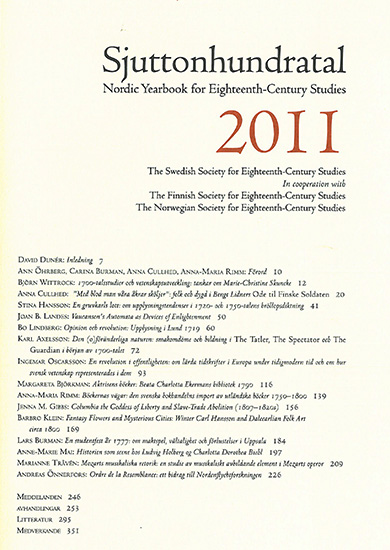Fantasy Flowers and Mysterious Cities: Winter Carl Hansson and Dalecarlian Folk Art circa 1800
DOI:
https://doi.org/10.7557/4.2393Keywords:
folk art, late eighteenth century, Dalarna, SwedenAbstract
During the late eighteenth century, folk art developed in new and intriguing ways in several Scandinavian regions. This essay concentrates on the developments around Lake Siljan in Dalarna, primarily as they were expressed by Winter Carl Hansson, one of the most accomplished of the artists. In his renditions of biblical topics such as the Workers in the Vineyard and the Descent from the Cross, one may observe a skilful blending of religious mystery and mundane life, as well as complex contrasts between floral arrangements and imposing cities. Through his remarkable ability to enhance common features of Dalecarlian folk art, this unschooled artist communicates striking powers of presence. Ultimately, the new artistic energies - in works by Winter Carl and others - must be understood in light of the influence of the many printed texts and images that were then available. Thus, to the extent that a general breakthrough into new cultural and social concerns took place during the late eighteenth century, this is true also of folk art. Furthermore, the folk art that was shaped at this time had a profound impact in the twentieth century, when it came to signify the most appealing aspects of Sweden's national cultural heritage.Metrics
PDF views
639
Downloads
Published
2011-10-01
Issue
Section
Peer-reviewed articles









